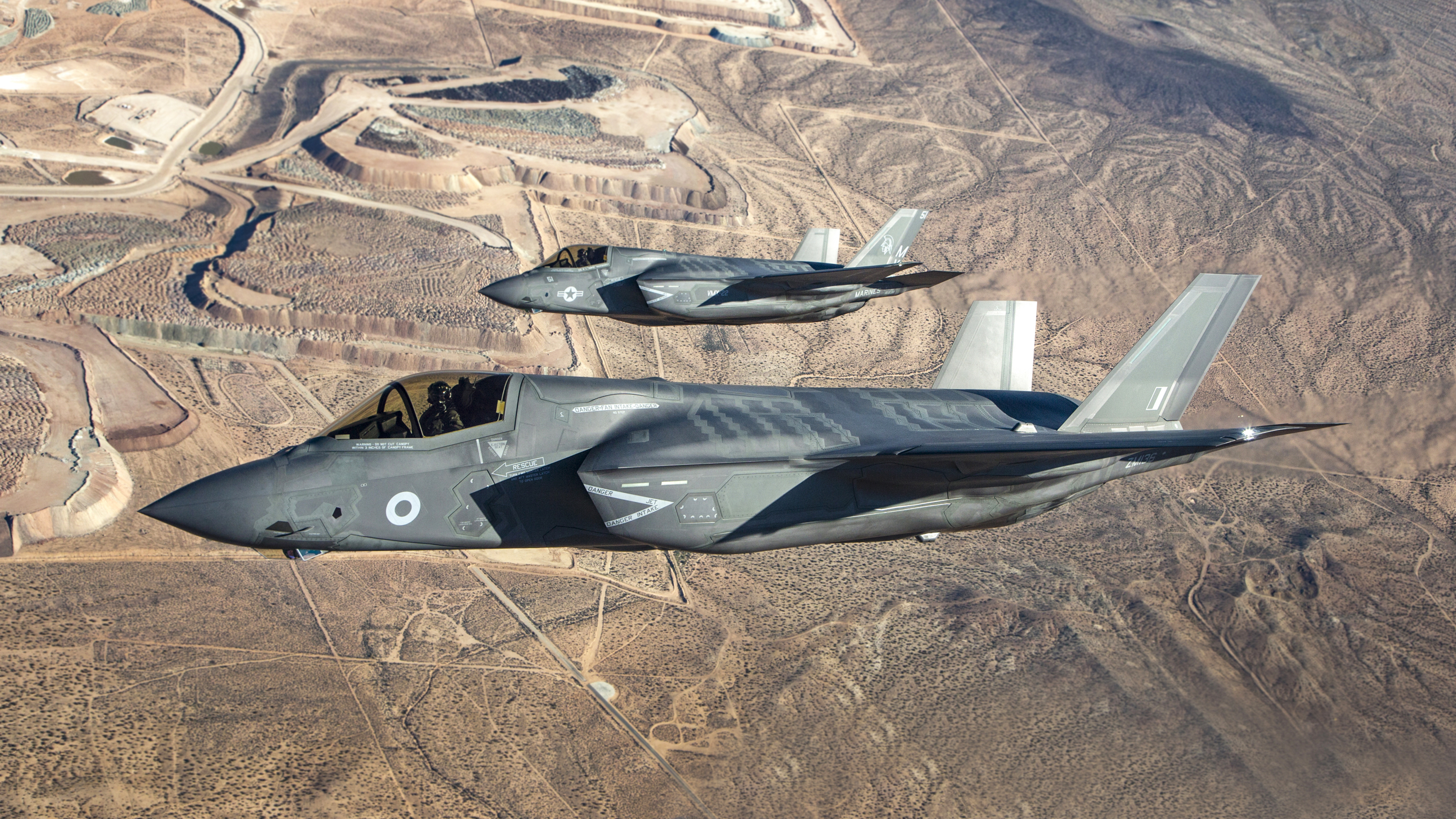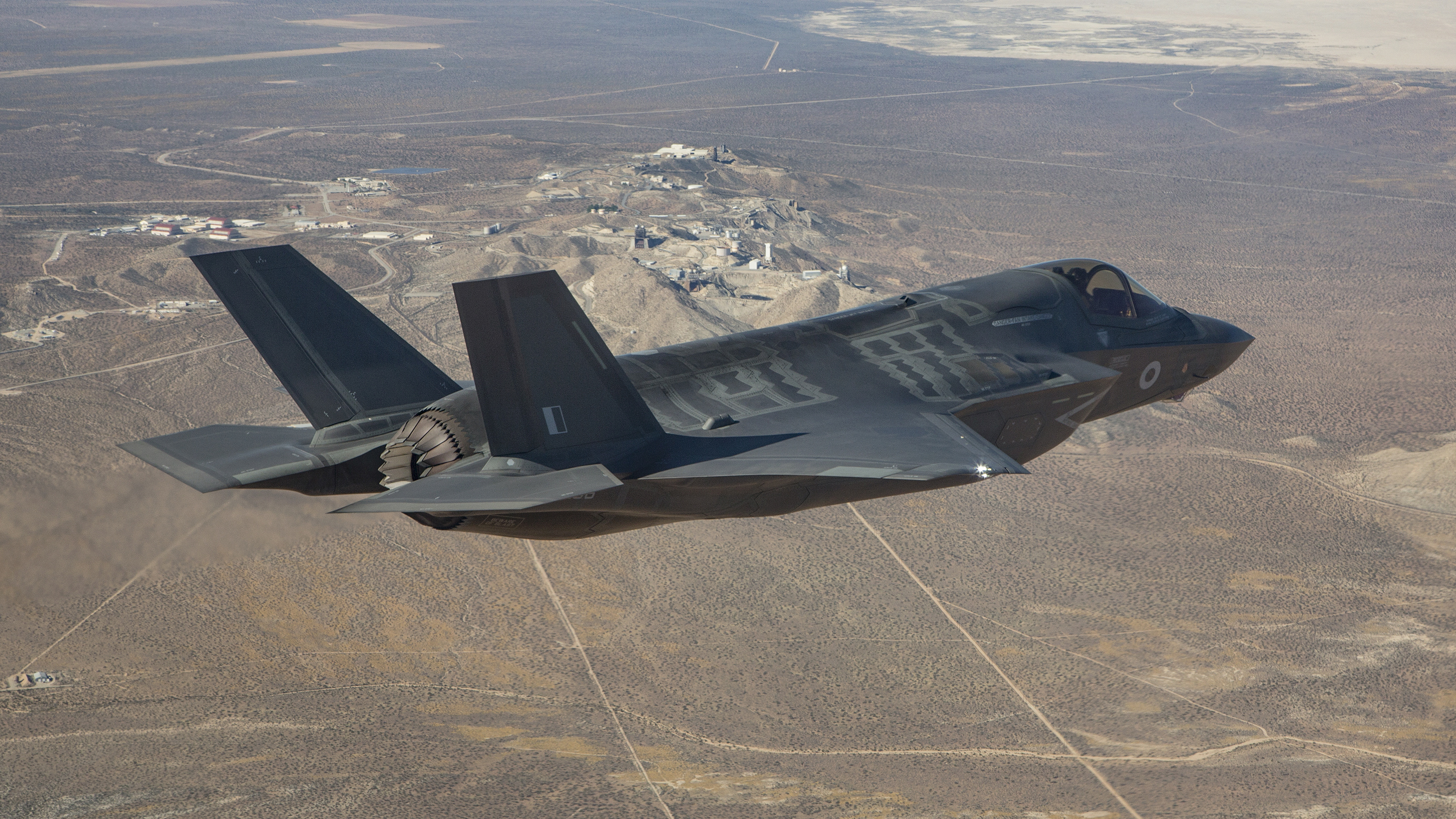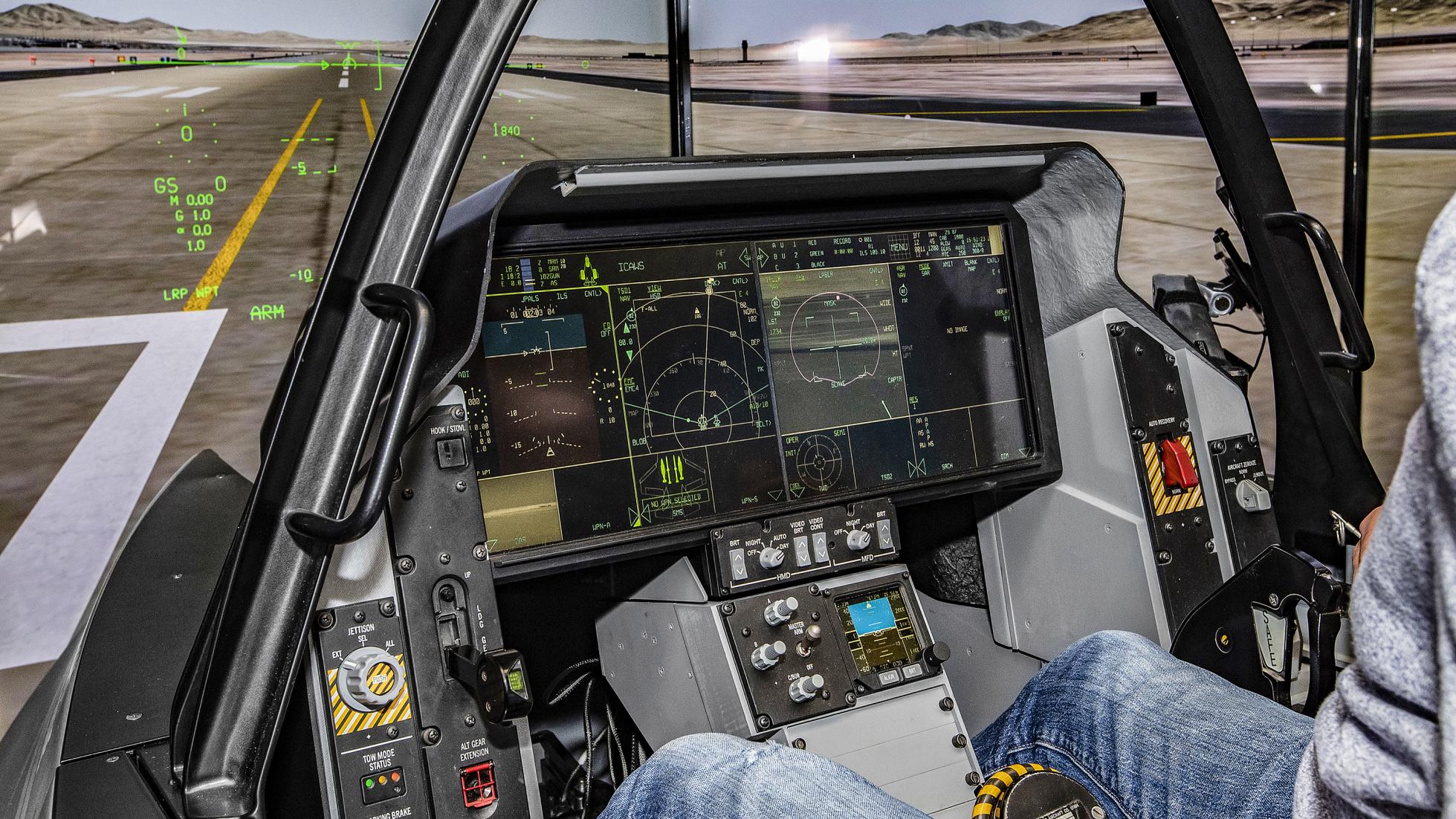
Lockheed Martin F-35 Lightning review
Driving
What is it like to drive?
“Oh yeah, there’s an excitement to your first time flying the F-35,” Jim Beck assures us. “You’re breathing slightly quicker. And I went in there with 2,000 hours in various other jets. I was ridiculously confident in my own abilities but still found myself nervous when I got to the end of the runway.
“The performance of this jet – when you let the brakes go and do a burner take off – it’s ‘WOAH, well I wasn’t expecting that’. You take off at 150 knots. Once you get it airborne, and the sim has taught you everything, your nerves go right down. Then I brought it back and I’d never hovered in anything else – I’d just taught myself on the sim – so I was nervous. But as I got down, the first thing I said to the other pilots in the squadron is ‘my god, the simulator’s realistic’.
“The jet fuses all of its data together and only presents about one per cent of it to the pilot, when a human decision is required. The actual ‘flying’ is the easiest bit. You don’t even think about it anymore. You ask the jet ‘can I do something’ and the jet will do it if it’s safe to do so. There isn’t a car like that out there.”
Especially given the F-35s employed by the Royal Air Force are B models, meaning they can vertically hover before landing. “Autopilot is a little smarter in the STOVL and hover modes,” says Jim. “We’ve got numerous hover modes but the coolest is when the engine is just holding you up, you’ve got no lift off the wings. All 40,000 pounds of thrust is keeping you in the air. You’re fully in autopilot at that point.
“We’ve actually got modes where it’ll decelerate itself alongside the Queen Elizabeth carrier, by analysing what speed the ship is doing. It’ll come alongside and control its deceleration automatically. Returning to a boat is now actually quite a stress-free environment. Years ago, Harrier pilots would come back dripping in sweat thinking about STOVL or hover. We don’t do that!
“Let go of the controls and it just stabilises. When you’ve finished a manoeuvre you’ve asked the jet to do, the safest thing is to just let off the controls and it’ll right itself. It’s probably the smartest autopilot in the world right now.”
Which rather begs the question, given how much pushback there is in the car enthusiast world against autonomous driving and the swathes of active safety systems swiftly becoming the norm, is the F-35 too clinically adept to make its pilot a hero?
“Not when you’re doing ‘doggers’, as we call them,” Jim assures us. “We fly a thing called ‘angle of attack’ and while a Tornado could go 19AOA, we’re going to 50AOA. Which means I’m flying 80 knots and still fighting it. We just keep going up, and the last person to stop going up will win that fight. And that’s absolutely exhilarating. If I tried that in a Tornado I’d be in a parachute.”
It’s also, Jim suggests, an increasingly old-fashioned skill. “The dogfight exists but in a completely different domain now. If we were to go against an adversary, I’m doing it in a dogfight, but I’m not doing it in the jet’s physical domain. It takes place on the information spectrum now. And that information is shared between a pack of F-35s.
“Ideally we never want to get anywhere near our adversary. We want the battle to be done tens and tens of miles away, far enough that I won’t even get to see him through the naked eye. We’re talking ranges where our radars never used to see the opponent.”
Featured







